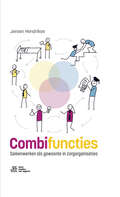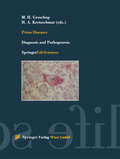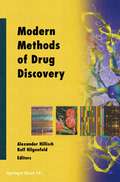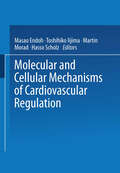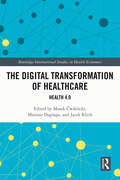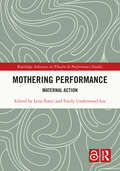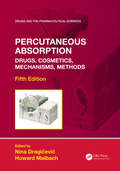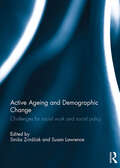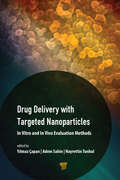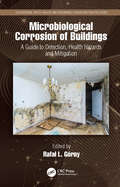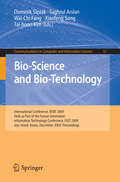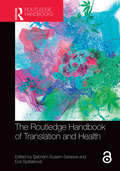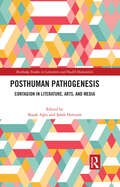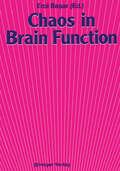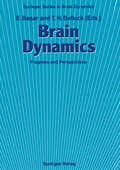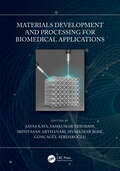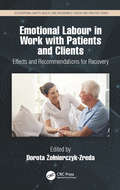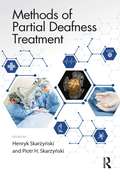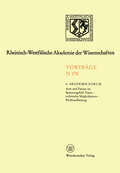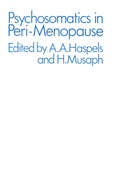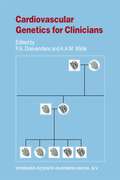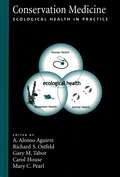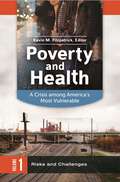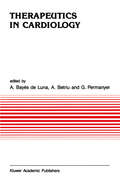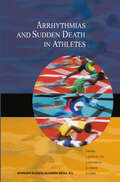- Table View
- List View
Combifuncties: Samenwerken als gewoonte in zorgorganisaties
byDe zorg heeft te maken met een fundamenteel personeelstekort. Een uitdaging waar Combifuncties een bewezen oplossing voor biedt. Maak gebruik van de kracht van combifuncties voor meer motivatie en werkplezier!In een combifunctie bekleedt een medewerker twee verschillende functies in twee teams, afdelingen of zelfs organisaties. Bijvoorbeeld een leidinggevende die ook patiëntenzorg verleent of een verpleegkundige die ook kwaliteitsmedewerker is.In dit boek laat Jeroen Hendrikse zien hoe je krachtige zorgorganisaties krijgt waarin zowel de patiënt als de medewerker zich gehoord, gezien en gesteund voelt. Hij biedt handvatten om aan de slag te gaan en geeft veel voorbeelden uit de zorgpraktijk.---“De aankomende jaren zal het blijven borgen van toegankelijke zorg onze grootste opgave zijn. Jeroen Hendrikse diept in zijn nieuwe boek een belangrijke oplossing uit: de synergie van combifuncties.”Prof. dr. Maurice van den Bosch, interventieradioloog; voorzitter raad van bestuur, Onze Lieve Vrouwe Gasthuis (OLVG); voorzitter, Santeon ---“Dit boek komt precies op tijd! We staan immers op een kruispunt in de zorg. Jeroen Hendrikse brengt vanuit zijn ervaring in de zorg en het leidinggevende kader een verhelderend en inspirerend perspectief op combifuncties. Niet alleen meeslepend en beeldend, maar ook praktisch ingestoken met een goed ontwikkeld stappenplan.”Prof. dr. Jim van Os, hoogleraar psychiatrie; voorzitter Divisie Hersenen, UMC Utrecht---“Combifuncties maken voor veel professionals de zorg weer de leukste plek om te werken.”Prof. dr. Marieke Schuurmans, hoogleraar verplegingswetenschap; Chief Healthcare Organization, Nederlandse Zorgautoriteit (NZa)
Prion Diseases: Diagnosis and Pathogenesis (Archives of Virology. Supplementa #16)
by Dr Prof. Dr.The overwhelming interest and the participation of more than 500 scientists from 26 countries made this symposium the largest meeting ever held in the field. In this book twenty-six invited speakers comprehensively present their data on the pathogenesis of prion diseases in humans and animals, on molecular mechanisms involved in the transmissibility across species barriers, on animal and in-vitro models currently available for the detection and quantification of infectivity and on the characterization of prion strains.
Modern Methods of Drug Discovery (Experientia Supplementum #93)
by Dr Prof.Research in the pharmaceutical industry today is in many respects quite different from what it used to be only fifteen years ago. There have been dramatic changes in approaches for identifying new chemical entities with a desired biological activity. While chemical modification of existing leads was the most important approach in the 1970s and 1980s, high-throughput screening and structure-based design are now major players among a multitude of methods used in drug discov ery. Quite often, companies favor one of these relatively new approaches over the other, e.g., screening over rational design, or vice versa, but we believe that an intelligent and concerted use of several or all methods currently available to drug discovery will be more successful in the medium term. What has changed most significantly in the past few years is the time available for identifying new chemical entities. Because of the high costs of drug discovery projects, pressure for maximum success in the shortest possible time is higher than ever. In addition, the multidisciplinary character of the field is much more pronounced today than it used to be. As a consequence, researchers and project managers in the pharmaceutical industry should have a solid knowledge of the more important methods available to drug discovery, because it is the rapidly and intelligently combined use of these which will determine the success or failure of preclinical projects.
Molecular and Cellular Mechanisms of Cardiovascular Regulation
by Hasso 04Scholz Masao Endoh Toshihiko Iijima Martin Morad Hasso ScholzThis volume contains selected papers presented at the Sendai International Sympo sium on Molecular and Cellular Mechanisms of Cardiovascular Regulation held from May 10-12, 1995, to honor the contributions ofProfessorNorio Taira, Chairman of the Department of Pharmacology (1972-1995), Tohoku University School of Medicine, Sendai, Japan. The Department of Pharmacology at Sendai has a long tradition of significant contribution to the development of drug therapy for cardiovascular diseases. The late Professor Koroku Hashimoto, the predecessor of Professor Norio Taira, first suggested the mode of action of calcium antagonists and their potential usefulness in therapy of ischemic heart disease and hypertension at an early stage of their development. The need for greater understanding of the pathophysiology of cardiovascular dis eases is more critical now than ever before because modern advances in basic and clinical sciences have prolonged the average life expectancy. Using a wide range of molecular and electrophysiological techniques, major advances are occurring frequently in the field of cardiovascular physiology and pharmacology. Such multifaceted approaches are preferred because human cardiovascular diseases are complex, requiring multiple interventions and an in-depth understanding of molecular mechanisms underlying the disease. The first section of this book focuses on molecular mechanisms of ion channel regulation. Eight of ten chapters in this section are devoted to the recent advances in molecular characterization and regulation of various types of potassium channels in cardiac, vascular, and neuronal tissues. A discussion of the structure and function of sodium and calcium channels is also included.
The Digital Transformation of Healthcare: Health 4.0 (Routledge International Studies in Health Economics)
by Marek 262 Wiklicki Mariusz Duplaga Jacek KlichHealth 4.0 is a term that has derived from the Fourth Industrial Revolution (Industry 4.0), as it pertains to the healthcare industry. This book offers a novel, concise, but at the same time, broad picture of the challenges that the technological revolution has created for the healthcare system. It offers a comprehensive view of health sector actors’ interaction with the emerging new technology, which is disrupting the status quo in health service delivery. It explains how these technological developments impact both society and healthcare governance. Further, the book addresses issues related to key healthcare system stakeholders: the state, patients, medical professionals, and non-governmental organizations. It also examines areas of healthcare system adaptiveness and draws its conclusions by analysing recent health policy changes in different countries across the Americas, Europe, and Asia. The authors offer an innovative approach to the subject by identifying the critical determinants of successful implementation of the Fourth Industrial Revolution’s outcomes in practice, on both a macro- and microlevel. The macrolevel analysis is focused on essential factors of healthcare system adaptiveness for Health 4.0, while the microlevel relates to patients’ expectations with a particular emphasis on senior citizens. The book will appeal to academics, researchers, and students, across a wide range of disciplines, such as health economics, health sciences, public policy, public administration, political science, public governance, and sociology. It will also find an audience among healthcare professionals and health and social policymakers due to its recommendations for implementing Industry 4.0 into a healthcare system.
Mothering Performance: Maternal Action (Routledge Advances in Theatre & Performance Studies)
by Lena Simi 263 Emily Underwood-LeeMothering Performance is a combination of scholarly essays and creative responses which focus on maternal performance and its applications from a variety of interdisciplinary perspectives. This collection extends the concept and action of ‘performance’ and connects it to the idea of ‘mothering’ as activity. Mothering, as a form of doing, is a site of never-ending political and personal production; it is situated in a specific place, and it is undertaken by specific bodies, marked by experience and context. The authors explore the potential of a maternal sensibility to move us towards maternal action that is explicitly political, ethical, and in relation to our others. Presented in three sections, Exchange, Practice, and Solidarity, the book includes international contributions from scholars and artists covering topics including ecology, migration, race, class, history, incarceration, mental health, domestic violence, intergenerational exchange, childcare, and peacebuilding. The collection gathers diverse maternal performance practices and methodologies which address aesthetics, dramaturgy, activism, pregnancy, everyday mothering, and menopause. The book is a great read for artists, maternal health and care professionals, and scholars. Researchers with an interest in feminist performance and motherhood, within the disciplines of performance studies, maternal studies, and women’s studies, and all those who wish to gain a deeper understanding of maternal experience, will find much of interest.
Percutaneous Absorption: Drugs, Cosmetics, Mechanisms, Methods (Drugs and the Pharmaceutical Sciences)
by Nina Dragi 263 Evi 263 Howard MaibachUpdating and expanding the scope of topics covered in the previous edition, Percutaneous Absorption: Drugs, Cosmetics, Mechanisms, Methods, Fifth Edition supplies new chapters on topics currently impacting the field including cutaneous metabolism, skin contamination, exposure to protein allergens, in vitro absorption methodology and the percutaneous absorption of chemical mixtures. Complete with studies on the role of the skin as a key portal of entry for chemicals into the body, this book serves as a detailed reference source for recent advances in the field, as well as an experimental guide for laboratory personnel. Key Features: Details in vivo and in vitro methods for measuring absorption, dermal decontamination, mechanisms of transdermal delivery, and the relationship of transepidermal water loss to percutaneous absorption Considers a range of mathematical models, the safety evaluation of cosmetic ingredients, the absorption of hair dyes, nanoparticles for drug delivery, and other novel methods of drug delivery Discusses topics including skin metabolism, the skin reservoir, and the effects of desquamation on absorption
Active Ageing and Demographic Change: Challenges for social work and social policy
by Sinisa Zrins 269 Ak Susan LawrenceAlthough demographic change has been a widely discussed topic for decades, its scope, social impact and related policy responses leave us with many unresolved social issues. Demographic change is a reality for all European societies but the ways in which it is taking place differ from country to country. Active ageing both as a concept and policy response to the demographic ageing of populations has been widely debated, researched and utilised, informing both policy and practice, and providing a common narrative framework to ageing. However, there continues to be a lack of clarity around the precise meaning of ‘active ageing’.This book explores the way in which social work is critically engaging with the theme of active ageing, in light of, or maybe as a reaction to, the policy responses witnessed within the context of large-scale and rapid demographic change. This book was originally published as a special issue of the European Journal of Social Work.
Drug Delivery with Targeted Nanoparticles: In Vitro and In Vivo Evaluation Methods
by Y 305 Lmaz Çapan Adem Sahin Hayrettin TonbulNanotechnology has the potential to change every part of our lives. Today, nanotechnology-based products are used in many areas, and one of the most important areas is drug delivery. Nanoparticulate drug delivery systems not only provide controlled delivery of drugs and improved drug solubility but also improve drug efficiency and reduce side effects via targeting mechanisms. However, compared with conventional drug delivery systems, few nanoparticle-based products are on the market and almost all are nontargeted or only passively targeted systems. In addition, obtaining targeted nanoparticle systems is quite complex and requires several evaluation mechanisms. This book discusses the production, characterization, regulation, and currently marketed targeted nanoparticle systems in a broad framework. It provides an overview of targeted nanoparticles’ (i) in vitro characterization, such as particle size, stability, ligand density, and type; (ii) in vivo behavior for different targeting areas, such as tumor, brain, and vagina; and (iii) current advances in this field, including clinical trials and regulation processes.
Microbiological Corrosion of Buildings: A Guide to Detection, Health Hazards, and Mitigation (Occupational Safety, Health, and Ergonomics)
by Rafa 322 L. GórnyEnvironmental stress caused by water continuously exposes buildings to microbial colonization. This is highly evident when both minor dampness and mass flooding occur. The text describes how microbiological corrosion of buildings and the structures and substances derived from these hazards are responsible for adverse health effects on people exposed to these contaminated environments. Microbiological Corrosion of Buildings: A Guide to Detection, Health Hazards, and Mitigation describes the key elements and methods for neutralising and removing microbiological contamination, and the operating algorithm for checking the effectiveness of preventative solutions. Ideal for construction engineers, microbiologists and professionals in the field. Features: Latest methods for detection of indoor microbial hazards Identifies the tools needed for natural, non-destructive and non-invasive methods of bio-corrosion removal Describes the social and health problems associated with exposure to microbiological hazards Provides case studies and examples of microorganisms responsible for microbial corrosion. ‘Climate change and the associated adverse effects, such as floods and whirlwinds, make the problem of microbiological corrosion of buildings that generates health risks and economic losses on a global scale, the focus of science and technology. The monograph presents a complex problem of building bio-corrosion, that requires knowledge of the distant fields of microbiology and building technology, for the use of both scientists and practitioners. This pioneering work of an interdisciplinary nature harmoniously combines knowledge on specific microbiological issues relating to the process of bio-corrosion and the associated health risks with detailed issues of construction technology concerning the prevention of bio-corrosion and its removal. The authors succeeded in combining a very high scientific level in the monograph with an accessible and understandable presentation of complex problems. The extensive references, ranging from "classical" items from many years ago to the most recent articles presenting the state of the art in this field, are worth emphasising.’ —Prof. Jacek Dutkiewicz, Ph.D., D.Sc., Institute of Rural Health in Lublin
Bio-Science and Bio-Technology: International Conference, BSBT 2009 Held as Part of the Future Generation Information Technology Conference, FGIT 2009 Jeju Island, Korea, December 10-12, 2009 Proceedings (Communications in Computer and Information Science #57)
by Dominik 346 L 281 Zak Tughrul Arslan Xiaofeng Song Tai-Hoon KimAs future generation information technology (FGIT) becomes specialized and fr- mented, it is easy to lose sight that many topics in FGIT have common threads and, because of this, advances in one discipline may be transmitted to others. Presentation of recent results obtained in different disciplines encourages this interchange for the advancement of FGIT as a whole. Of particular interest are hybrid solutions that c- bine ideas taken from multiple disciplines in order to achieve something more signi- cant than the sum of the individual parts. Through such hybrid philosophy, a new principle can be discovered, which has the propensity to propagate throughout mul- faceted disciplines. FGIT 2009 was the first mega-conference that attempted to follow the above idea of hybridization in FGIT in a form of multiple events related to particular disciplines of IT, conducted by separate scientific committees, but coordinated in order to expose the most important contributions. It included the following international conferences: Advanced Software Engineering and Its Applications (ASEA), Bio-Science and Bio-Technology (BSBT), Control and Automation (CA), Database Theory and Application (DTA), D- aster Recovery and Business Continuity (DRBC; published independently), Future G- eration Communication and Networking (FGCN) that was combined with Advanced Communication and Networking (ACN), Grid and Distributed Computing (GDC), M- timedia, Computer Graphics and Broadcasting (MulGraB), Security Technology (SecTech), Signal Processing, Image Processing and Pattern Recognition (SIP), and- and e-Service, Science and Technology (UNESST).
The Routledge Handbook of Translation and Health (Routledge Handbooks in Translation and Interpreting Studies)
by 350 Ebnem Susam-Saraeva Eva SpisiakováThe Routledge Handbook of Translation and Health provides a bridge between translation studies and the burgeoning field of health humanities, which seeks novel ways of understanding health and illness. As discourses around health and illness are dependent on languages for their transmission, impact, spread, acceptance and rejection in local settings, translation studies offers a wealth of data, theoretical approaches and methods for studying health and illness globally. Translation and health intersect in a multitude of settings, historical moments, genres, media and users. This volume brings together topics ranging from interpreting in healthcare settings to translation within medical sciences, from historical and contemporary travels of medicine through translation to areas such as global epidemics, disaster situations, interpreting for children, mental health, women’s health, disability, maternal health, queer feminisms and sexual health, and nutrition. Contributors come from a wide range of disciplines, not only from various branches of translation and interpreting studies, but also from disciplines such as psychotherapy, informatics, health communication, interdisciplinary health science and classical Islamic studies. Divided into four sections and each contribution written by leading international authorities, this timely Handbook is an indispensable resource for all students and researchers of translation and health within translation and interpreting studies, as well as medical and health humanities. Intorduction and Chapter 18 of this book are freely available as a downloadable Open Access PDF at http://www.taylorfrancis.com under a Creative Commons [Attribution-Non Commercial-No Derivatives (CC-BY-NC-ND)] 4.0 license.
Posthuman Pathogenesis: Contagion in Literature, Arts, and Media (Routledge Studies in Literature and Health Humanities)
by Ba 351 Ak A 287 305 N 350 Afak HorzumThis multi-vocal assemblage of literary and cultural responses to contagions provides insights into the companionship of posthumanities, environmental humanities, and medical humanities to shed light on how we deal with complex issues like communicable diseases in contemporary times. Examining imaginary and real contagions, ranging from Jeep and SHEVA to plague, HIV/AIDS, and COVID-19, Posthuman Pathogenesis discusses the inextricable links between nature and culture, matter and meaning-making practices, and the human and the nonhuman. Dissecting pathogenic nonhuman bodies in their interactions with their human counterparts and the environment, the authors of this volume raise their diverse voices with two primary aims: to analyse how contagions trigger a drive to survival, and chaotic, liberating, and captivating impulses, and to focus on the viral interpolations in socio-political and environmental systems as a meeting point of science, technology, and fiction, blending social reality and myth. Following the premises of the post-qualitative turn and presenting a differentiated experience of contagion, this ‘rhizomatic’ compilation thus offers a non-hierarchised array of essays, composed of a multiplicity of genders, geographies, and generations.
Chaos in Brain Function: Containing Original Chapters by E. Basar and T. H. Bullock and Topical Articles Reprinted from the Springer Series in Brain Dynamics
by Erol Ba 351 ArThe analysis of deterministic chaos is currently an active field in many branches of research. Mathematically all nonlinear dynamical systems with more than two degrees of freedom can generate chaos, becoming unpredictable over a longer time scale. The brain is a nonlinear system par excellence. Accordingly, the concepts of chaotic dynamics have found, in the last five years, an important application in research on compound electrical activity of the brain. The present volume seeks to cover most of the relevant studies in the newly emerging field of chaotic attractors in the brain. This volume is essentially a selection and reorganization of contri butions from the first two volumes in the Springer Series in Brain Dynamics, which were based on conferences held in 1985 and 1987 in Berlin. It also includes (a) a survey of progress in the recording of evoked oscillations of the brain both at the cellular and EEG levels and (b) an agenda for research on chaotic dynamics. Although the first publications pointing out evidence of chaotic behavior of the EEG did not appear until the beginning of 1985, the presence of the pioneering scientists in this field gave the participants at the first conference (volume 1) a strong impulse toward this field. For me, as conference organizer, having been for a long time active in nonlinear EEG research, the integration of this topic was self-evident; however, the enthusiasm of the conference participants was greater than expected.
Brain Dynamics: Progress and Perspectives (Springer Series in Brain Dynamics #2)
by Erol Ba 351 Ar Theodore H. BullockThis volume is based on contributions to the second Brain Dynamics Conference, held in Berlin on August 10-14, 1987, as a satellite conference of the Budapest Congress of the International Brain Research Organization. Like the volume resulting from the first conference, Dynamics of Sensory and Cognitive Processing by the Brain, the present work covers new approaches to brain function, with emphasis on electromagnetic fields, EEG, event-related potentials, connectivistic views, and neural networks. Close attention is also paid to research in the emerging field of deterministic chaos and strange attractors. The diversity of this collection of papers reflects a multipronged advance in a hitherto relatively neglected domain, i. e., the study of signs of dynamic processes in organized neural tissue in order both to explain them and to exploit them for clues to system function. The need is greater than ever for new windows. This volume reflects a historical moment, the moment when a relatively neglected field of basic research into available signs of dynamic processes ongoing in organized neural tissue is expanding almost explosively to complement other approaches. From the topics treated, this book should appeal, as did its predecessor, to neuroscientists, neurologists, scientists studying complex systems, artificial intelligence, and neural networks, psychobiologists, and all basic and clinical investigators concerned with new techniques of monitoring and analyzing the brain's electromagnetic activity.
Materials Development and Processing for Biomedical Applications
by Sava 351 Kaya Sasikumar Yesudass Srinivasan Arthanari Sivakumar Bose Goncagül Serdaro 287 LuMaterials Development and Processing for Biomedical Applications focuses on various methods of manufacturing, surface modifications, and advancements in biomedical applications. This book examines in detail about five different aspects including, materials properties, development, processing, surface coatings, future perspectives and fabrication of advanced biomedical devices. Fundamental aspects are discussed to better understand the processing of various biomedical materials such as metals, ceramics, polymers, composites, etc. A wide range of surface treatments are covered in this book that will be helpful for the readers to understand the importance of surface treatments and their future perspectives. Additional Features Include: Examines various properties of biomedical materials at the beginning in several chapters which will enrich the fundamental knowledge of the readers. Discusses advancements in various fields of biomedical applications. Provides a glimpse of characterization techniques for the evaluation of material properties. Addresses biocompatibility, biocorrosion, and tribocorrosion. This book explores new and novel strategies for the development of materials and their biomedical applications. It will serve as a comprehensive resource for both students and scientists working in materials and biomedical sciences.
Emotional Labor in Work with Patients and Clients: Effects and Recommendations for Recovery (Occupational Safety, Health, and Ergonomics)
by Dorota 379 O 322 Nierczyk-ZredaThis book describes psychosocial working conditions that negatively impact the mental and physical well-being of employees of various “assistance-related” professional groups, as well as individuals whose work is related to contact with demanding clients. It offers concepts and research on the causes and effects of emotional burden (most often manifested as stress and burnout) when working with patients, children, and clients. The book provides a detailed analysis of various aspects of emotional burden at work. It includes a description of studies carried out in 5 different professional groups that were exposed to emotional burden during emotional work and emotional labour. The book discusses the application of known and international diagnostic methods and provides an intercultural comparison. The current diagnosis of stress and burnout, as well as physical and mental health of individuals performing emotional work will be covered, as well as offering practical solutions on assistance for individuals based on the diagnosis of their health. This book is for any professional or aspiring professional in the field, including postgraduate students. Scientists and practitioners in the field of work and health psychology, management, occupational health and safety, and HR will find this book of interest. Employers of assistance and services sectors, authorities formulating employment laws, lawyers, and occupational medicine physicians are also among this book’s top audience.
Methods of Partial Deafness Treatment
by Henryk Skar 380 Y 324 Ski Piotr H. SkarżThis book presents the revolutionary approach to the treatment of hearing loss proposed by Professor Henryk Skarżyński and developed in collaboration with the group of internationally recognized experts on clinical and experimental otolaryngology, otosurgery, and audiology. The authors present an in-depth look at different aspects of this comprehensive concept of treatment of partial and total deafness with hearing implants, and discuss the approaches to diagnostics and patient selection, results in different groups of patients, the surgical technique, and procedures. This book also covers audiological aspects, auditory training, patient's performance, and psychology. This book is a comprehensive review of the method of partial and total deafness treatment developed and introduced into clinical practice by Professor Henryk Skarżyński. The publication is noteworthy for presenting a multifaceted approach to the subject from related science experts’ and clinicians’ point of view.
Arzt und Patient im Spannungsfeld: Natur - technische Möglichkeiten - Rechtsauffassung (Rheinisch-Westfälische Akademie der Wissenschaften #278)
by 6. Akademie-ForumPsychosomatics in Peri-Menopause
by A. A. Haspels and H. MusaphThe peri-menopause is emerging more and more as a subject for study by the doctor, the psychologist, the social worker, the gerontologist, the clinical chemist, the public health specialist, the sociologist, the psychiatrist and the experimental pathologist. The results of studies are gradually becoming known to the public, particularly to the prospective clients, ageing women. Women have begun to ask for treatment and they will most likely determine whether oestrogen replacement therapy comes into vogue. Psychosomatics in peri-menopause is an important sub ject, since the life-span of the woman has extended to nearly twice that of her fertile period. The life-expectancy for women in industralized countries is now some 70-75 years. This means that most can now expect to spend one third of their lives in the post-menopause. Consequently, there is now much more time than before in which to notice, experience and be bothered by peri menopausal changes. Moreover modern medicine has much more to oner than mere moral support to sufferers from ailments connected with progressing ovarian failure during peri-menopause. Although we cannot promise eternal youth - as Wilson does -there are more possibilities for treatment than 10 years ago.
Cardiovascular Genetics for Clinicians (Developments in Cardiovascular Medicine #239)
by A. A. M.Wilde P. A. DoevendansAll physicians practicing medicine encounter patients suffering from cardiovascular disease. This book has been outlined in such a way that vascular surgeons, general internists, neurologists and cardiologists should be able to use it. The book covers the complete scope of cardiac diseases in addition to chapters on hypertension and atherosclerosis. In many patients there is a family history of cerebrovascular accidents, myocardial infarction or peripheral arterial disease. Also in patients reporting collaps, palpitations and arrhythmias the family is crucial and can provide clues to a genetic cause of the disease. This book is published to guide physicians in the process of determining whether a genetic component is likely to be present. Furthermore, information is provided what the possibilities and limitations of DNA diagnostic techniques are. Finally, the importance of newly identified categories of potential patients, i. e. gene carriers without symptoms or any inducible sign of disease, is highlighted. For some patients a genetic diagnosis is essential to determine appropriate therapy and for counseling? In some other diseases DNA diagnostic tools are available but the relevant for the patients may be less clear. In other families the search for a disease causing gene is ongoing and the possibilities to find genes and to unravel the pathophysiology of the disease is limited by the lack of patients. To give insight into the current state of genetic diagnostics, the authors have classified the cardiovascular diseases.
Conservation Medicine: Ecological Health in Practice
by A. Alonso Aguirre, Richard S. Ostfeld, Gary M. Tabor, Carol House and Mary C. PearlConservation medicine is an emerging discipline, focussing on the intersection of ecosystem health, animal health, and human health. Work in the biomedical and veterinary sciences is now being folded into conservation biology; to explore the connections between animal and human health; trace the environmental sources of pathogens and pollutants; develop an understanding of the ecological causes of changes in human and animal health; and understand the consequences of diseases to populations and ecological communities. Conservation Medicine defines this new discipline. It examines ecological health issues from various standpoints, including the emergence and resurgence of infectious disease agents; the increasing impacts of toxic chemicals and hazardous substances; and the health implications of habitat fragmentation and degradation and loss of biodiversity. It will provide a framework to examine the connections between the health of the planet and the health of all species and challenge practitioners and students in the health sciences and natural sciences to think about new, collaborative ways to address ecological health concerns.
Poverty and Health [2 volumes]: A Crisis among America's Most Vulnerable [2 volumes]
by A. B. Mayfield-Clarke Adrienne L. Riegle Akilah Dulin Keita Allison A. Appleton Andrew S. London Augustine J. Kposowa Barbara J. Zappia Brian Joseph Gillespie Chantell B. Frazier Darlene M. Jenkins David S. Kirk Debarashmi Mitra Deborah L. Puntenney Donna D. Mcalpine Ernesto CastañEda Georgiana Bostean Hanna Jokinen-Gordon Jacob Avery Jeffrey M. Timberlake Jessica Bauer Walker John J. Green Josué Gilberto Lachica Karen T. Van Gundy Kathleen T. Grimm Kathryn Strother Ratcliff Kevin M. Fitzpatrick Krysia N. Mossakowski Lauren Kay Brinkley-Rubenstein Lonnie Hannon Margaret Hardy Mary T. Lewis Maura Nsonwu Meghan L. Mills Michel Boudreaux Nicholas Gibson Peggy Kahn Raleigh Bailey Sharon Warren Cook Susan D. Stewart Timothy Stablein Travis P. Baggett William Lofton Turner Yolanda McdonaldA collection of in-depth essays focused on the health issues facing the poorest populations in the United States as it relates to the common good of all Americans.Despite living in one of the wealthiest countries in the world, far too many low-income and no-income men, women, and children in this nation are without health insurance or health care. More than half of those financially bereft have a serious health problem, with poor children three to five times more likely to experience chronic health issues than their more affluent peers. This set is a compilation of writings that address the complex problem of poverty and health across location and population. Through two informative volumes, the authors examine key issues including health care delivery, access, and disparities among various disenfranchised populations. Leading experts explore the reciprocal relationship between economic disadvantage and poor health, and ponder potential solutions to cope with these challenges.
Therapeutics in Cardiology (Developments in Cardiovascular Medicine #81)
by A. Bayés de Luna A. Betriu G. PermanyerTherapy in cardiology has advanced enormously in recent years. This has resulted in the organization of many meetings and the publication of numerous books dedicated to examining the latest aspects of, for instance, pharmacolog ic, electrical and surgical treatment. However, only a few of these meetings and publications have attempted to present an overall review of all advances that have taken place in the field of therapy. In the last years the Spanish Society of Cardiology has shown a great interest in the continuous medical education in cardiology. The Society has organized various meetings and has published several books on the above-mentioned topics. Consequently, the Society has decided to publish this book, an update of the therapeutics in cardiology, of which a Spanish version is also available. World renowned experts and outstanding Spanish cardiologists were invited to review all aspects of therapy in cardiology. We would like to thank the Spanish Society of Cardiology and the Catalan Cardiac Society for the generous assistance they have given us during all stages of book preparation. We also would like to express our appreciation to all the authors for their valuable contributions. Their combined efforts enable us to put this volume in the hands of the reader.
Arrhythmias and Sudden Death in Athletes (Developments in Cardiovascular Medicine #232)
by A. Bayés de Luna F. Furlanello B. J. Maron D. P. ZipesCardiovascular diseases are the most important causes of death in the world today. In adults, the most frequent heart disease is acute myocardial infarction, which can lead to sudden death. To prevent these diseases we need to fight against their main risk factors, which include smoking, lipid disorders, hypertension, diabetes and a sedentary life-style, among others. It has been demonstrated that physical exercise or sports at any age provide notable benefits and can help to decrease other risk factors and reduce the incidence of cardio vascular diseases. Exercise can be simply walking or cycling. Aerobic exercise con tributes to weight loss and also helps to control blood pressure, cholesterol and diabetes. It therefore plays an important role in prevention of heart diseases. Sports for young people are of great value and advisable not only because they con tribute to physical fitness but also because they help in psychological well-being. Young people should be encouraged to include general exercise, and particularly sports, into their daily activities. The following points however, should be kept in mind: I. Although winning at a sport is important, this is only so if it is achieved in natural physical conditions and with the correct training. Therefore, it is advisable to keep well away from any type of activity which artificially increases physical performance, that is, drug taking.
